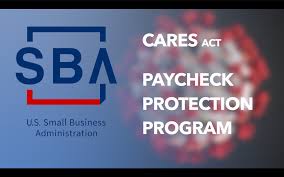New EZ Paycheck Protection Program (PPP) Loan Forgiveness Form
 The Small Business Administration recently issued the EZ Paycheck Protection Program (PPP) Loan Forgiveness Form, which allows some qualified borrowers to fill out a smaller (a two-page rather than a four-page) form.
The Small Business Administration recently issued the EZ Paycheck Protection Program (PPP) Loan Forgiveness Form, which allows some qualified borrowers to fill out a smaller (a two-page rather than a four-page) form.
The EZ form still requires borrowers to do calculations and provide documentation, but not as much as the full form. (Note that borrowers still need to save documentation for proof of certifications.)
Who can use the EZ PPP Forgiveness form?
The EZ form can be used on any size loan if the borrower can affirm one of the following:
- The borrower is a self-employed individual, independent contractor, or sole proprietor who had no employees at the time of the PPP Loan application and did not include any employee salaries in the computation of average monthly payroll in the Borrower Application Form (SBA Form 2483).
- The borrower did not reduce annual salary or hourly wages of any employee by more




